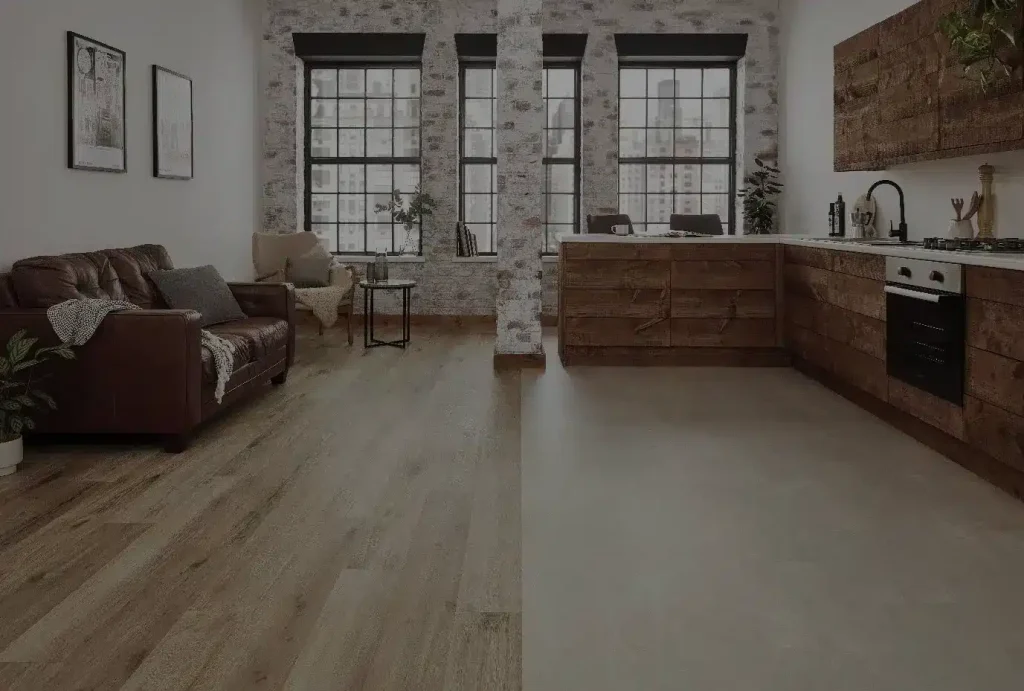Wondering if LVT flooring is good enough for your dream home renovation? Discover why this innovative flooring solution is taking the UK market by storm, and whether it’s the right choice for your specific needs.
Understanding LVT Flooring: The Basics
Luxury Vinyl Tile (LVT) flooring represents a significant advancement in modern flooring technology. At its core, LVT consists of multiple layers, including a durable wear layer, a high-resolution photographic layer, and a stable core. This sophisticated construction allows LVT to perfectly mimic the appearance of natural materials like hardwood, stone, or ceramic tiles, while offering superior practical benefits. Recent market research shows that LVT flooring sales have increased by 35% in the UK during 2023, reflecting growing consumer confidence in this versatile flooring solution.
The Benefits of Installing LVT Flooring
- Exceptional Durability: Modern LVT features wear layers up to 0.7mm thick, providing outstanding resistance to daily wear and tear
- Water Resistance: Most LVT products are 100% waterproof, making them ideal for moisture-prone areas
- Style Versatility: Available in thousands of designs, with over 60% of UK suppliers reporting increased demand for wood-effect patterns
- Cost-Effectiveness: Typically 40-60% cheaper than natural materials while offering similar aesthetics
- Comfort Underfoot: Features built-in cushioning that reduces fatigue and noise
- Easy Maintenance: Requires only regular sweeping and occasional mopping
Potential Drawbacks to Consider
While LVT flooring offers numerous advantages, it’s essential to consider some limitations. The lifespan of LVT typically ranges from 10-20 years, which is shorter than natural hardwood or stone flooring that can last 50+ years. Environmental concerns include the product’s vinyl composition and potential VOC emissions, particularly during initial installation. Additionally, while high-quality LVT can enhance your home’s appeal, it generally doesn’t add as much resale value as natural materials. Recent studies indicate that homes with premium flooring materials like hardwood command 2.5% higher resale values compared to those with vinyl tiles.
Where LVT Flooring Works Best in Your Home
LVT flooring demonstrates exceptional versatility across different rooms, but some spaces benefit more than others from its unique properties. Kitchens and bathrooms are prime candidates due to LVT’s waterproof nature and easy maintenance. High-traffic areas like hallways and living rooms benefit from its durability, while basements appreciate its moisture resistance and insulation properties. However, rooms receiving direct sunlight might require additional UV protection to prevent fading. Industry data shows that 75% of UK homeowners prefer LVT in their kitchens and bathrooms, while traditional hardwood remains popular in bedrooms and formal living spaces.
Installation and Maintenance: What You Need to Know
- Installation Options:
- Professional installation (recommended for optimal results)
- Click-lock DIY systems for experienced homeowners
- Adhesive installation for maximum stability
- Maintenance Requirements:
- Daily: Light sweeping or vacuuming
- Weekly: Damp mopping with approved cleaners
- Quarterly: Deep cleaning and inspection
- Annually: Professional assessment of wear and tear
Cost Analysis: LVT vs Traditional Flooring Options
Understanding the financial implications of LVT flooring is crucial for making an informed decision. Current market prices in the UK range from £20-£45 per square metre for quality LVT, with installation costs adding approximately £15-£25 per square metre. Compared to natural hardwood (£45-£75/m² plus installation) or premium stone tiles (£50-£100/m² plus installation), LVT offers significant initial savings. However, factor in the shorter lifespan and potential replacement costs when calculating long-term value.
Making the Right Choice for Your Home
The decision to install LVT flooring should align with your specific needs, budget, and lifestyle preferences. Consider factors such as room usage, moisture exposure, sunlight levels, and expected longevity. For high-traffic areas or moisture-prone spaces, LVT often proves the most practical choice. However, if you’re planning to sell your property in the near future or prefer the authenticity of natural materials, traditional flooring options might be more suitable. Recent surveys show that 82% of UK homeowners who chose LVT report high satisfaction levels, particularly praising its durability and maintenance ease.
Expert Installation Services in Bromley and Kent
At Bromley Tilers, we specialise in professional LVT flooring installation across Bromley and Kent. Our experienced team ensures precise fitting, proper subfloor preparation, and optimal performance of your new flooring. We offer comprehensive consultations to help you select the right LVT product for your space and provide detailed maintenance guidance to maximise your investment’s longevity. Contact us today to discuss your LVT flooring project and receive a competitive quote backed by our quality guarantee.
FAQ
Can mold grow under LVT?
While vinyl plank flooring is water-resistant, it is not immune to mold. Mold can develop underneath the planks due to water seeping through the seams, as well as around the edges where moisture accumulates from poor installation or lack of sealing.
Can you use a Swiffer on luxury vinyl plank flooring?
A: Yes it can. I’ve been using it on my vinyl plank flooring for a few years now. It works great on the vinyl waterproof flooring.
What destroys vinyl plank flooring?
The high heat and moisture produced by steam can warp and damage the vinyl when it makes its way into seams and under the planks. This will soften the adhesive beneath the planks, potentially leading to shifting or peeling of the planks, which will make a mess of your flooring over time.
What can you not use on LVT flooring?
Avoid using detergents, soaps, abrasive cleaners or products intended to add shine to your floors. These can cause product buildup that may leave a film on your floors and will generally dull their shine over time. Don’t use wax or solvent-based polishes. Don’t use ammonia or ammonia-based cleaning solutions.
What is the lifespan of LVT flooring?
In conclusion, with proper selection, installation, and care, your LVP or LVT flooring can serve you well for 10 to 25 years. To maximise this potential, opt for a thicker wear layer of 0.5mm or 0.7mm, prefer an SPC core, ensure the flooring is click-fitted, and follow the recommended maintenance practices.
Sources
[1] https://www.msisurfaces.com/luxury-vinyl-flooring/pros-and-cons/
[2] https://www.porcelanosa.com/trendbook/uk/lvt-flooring-pros-cons/
[3] https://www.woodandbeyond.com/blog/10-disadvantages-of-lvt-flooring-from-a-flooring-expert/



